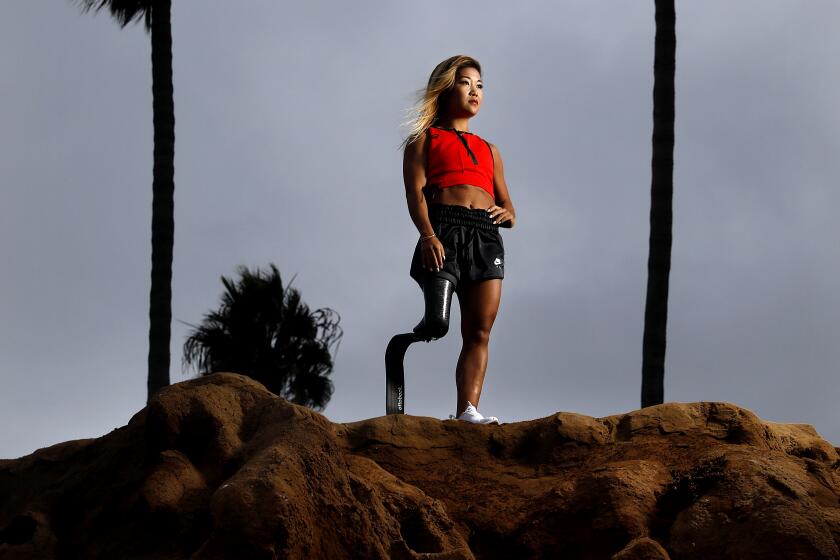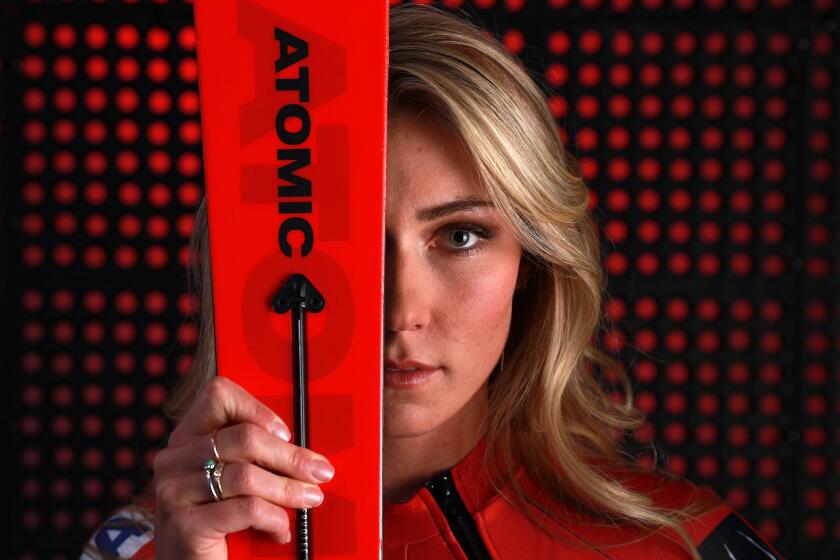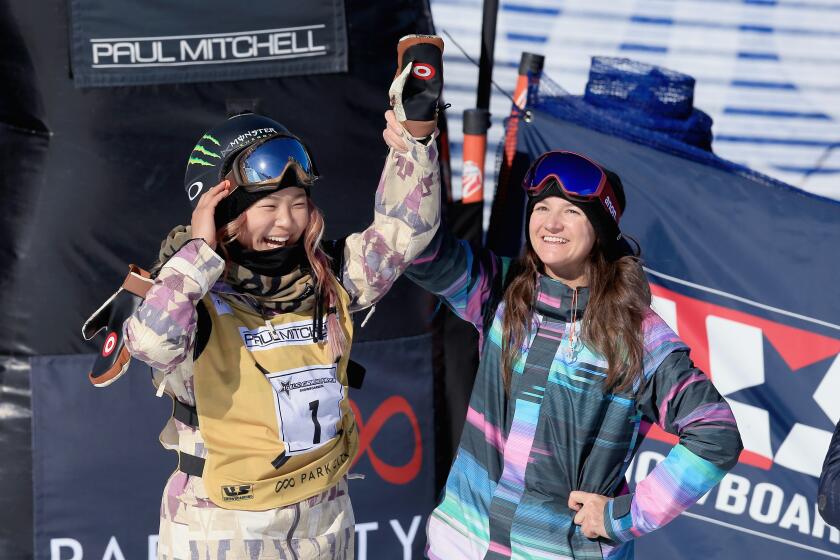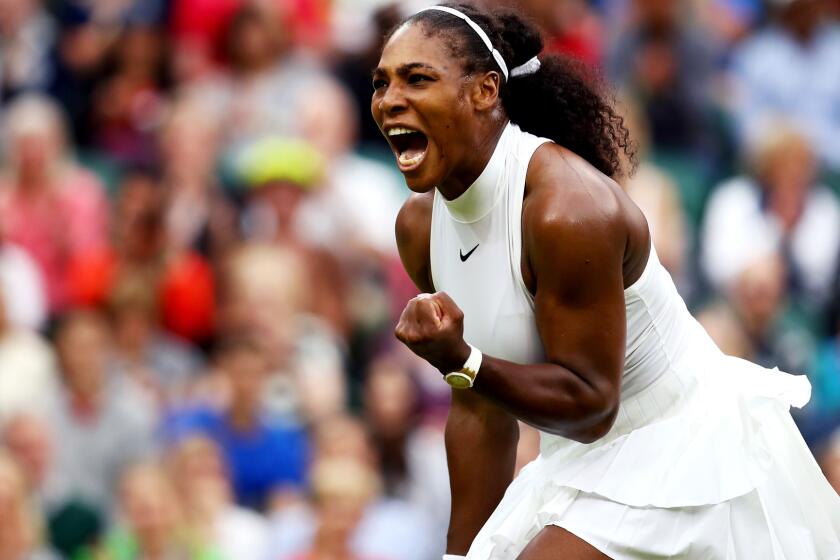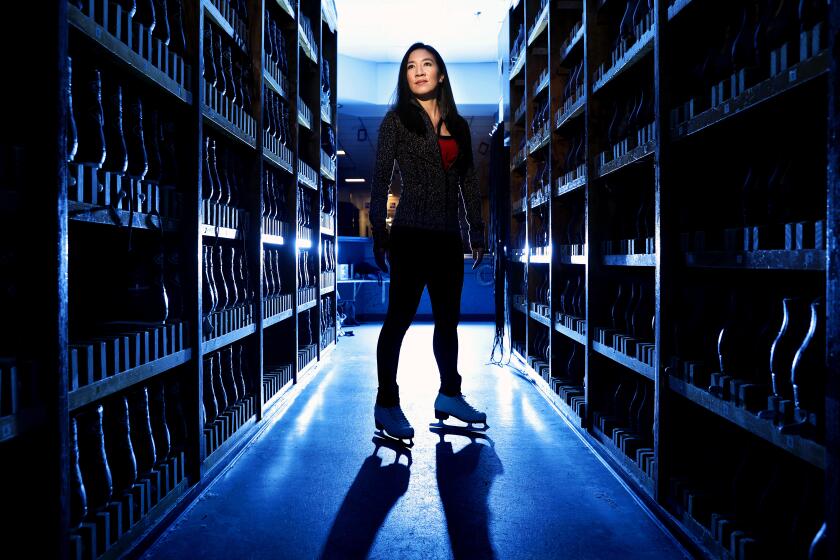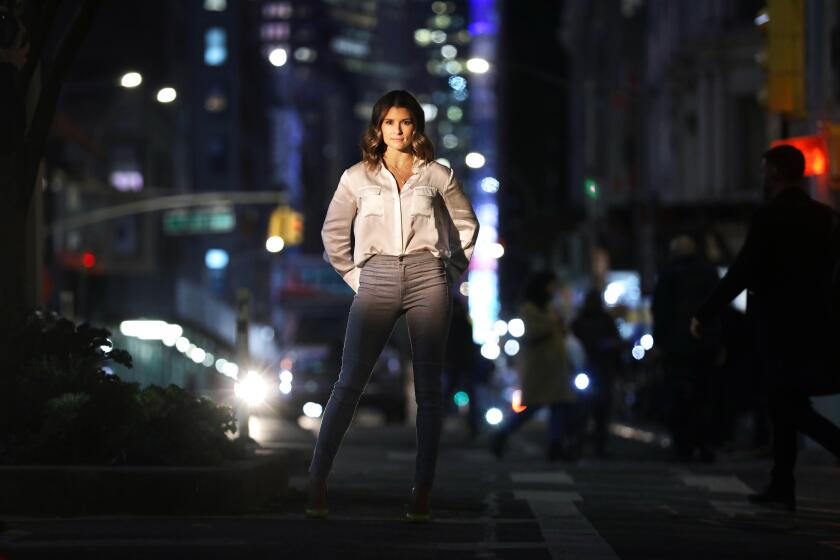How Jackie Joyner-Kersee conquered the Olympics and earned GOAT status
- Share via
As the story has often been told, Jackie Joyner’s grandmother Evelyn named her for Jacqueline Kennedy, wife of then-U.S. President John F. Kennedy, because Evelyn believed “someday this girl will be the First Lady of something.” She was right, time and time again.
Jackie Joyner-Kersee, as she became known after she married coach Bob Kersee in 1986, became one of the best female athletes who ever graced a field of play. She won three gold medals, one silver medal and two bronze medals in four consecutive Olympics, starting with the 1984 Los Angeles Games. She still holds the U.S. record in the long jump (24 feet, 7 inches), as well as the U.S. and world records in the heptathlon (7,291 points). The seven-event heptathlon tests speed, endurance, jumping and throwing; points are awarded based on the time an athlete runs or the distance she leaps or throws.
Joyner-Kersee, 58, grew up in poverty in East St. Louis, Ill., across the Mississippi River from St. Louis. She sometimes ate mayonnaise sandwiches for lunch, she said in the 1994 book “Jackie Joyner Kersee: Superwoman,” but the family had plenty of love. “I knew that eventually, if we continued to do things right, something good was going to happen.”
She played basketball and volleyball in high school and excelled at track, sometimes filling potato chip bags with sand to build a long jump pit. She had many scholarship offers but chose UCLA because the women’s basketball team had won the 1978 national championship and because she admired standout sprinter Evelyn Ashford. Joyner-Kersee was a four-year starter for the Bruins’ women’s basketball team, returning for her final season after the 1984 Olympics. She graduated in 1985.
While at UCLA she was diagnosed with asthma, which she had suspected was the cause of the gasping that sometimes sent her to the hospital. Despite her struggles with asthma and allergies, she continued to improve as a track athlete, and Bob Kersee became her personal coach. Her strength and speed made her well suited for the heptathlon. “The only event I had to learn was the javelin,” she told The Times in 1987. “They added that while I was in college, and the first time I picked up a javelin I speared myself in the head. I thought all I had to do was grab it and throw it. I wasn’t hurt, but I knew then and there that I had to spend some time on it.”
She was favored to win the heptathlon at the 1984 Olympics but was hampered by a sore hamstring and took silver. “It wasn’t an injury that cost me the gold medal. It was my mentality. I doubted my capabilities,” she said in “Superwoman.” But her disappointment was tempered by her older brother Al Joyner’s winning a surprise gold in the triple jump.
In 2019, Scout Bassett appeared in ESPN’s the Body Issue magazine to showcase a standard of beauty outside of the norm and to call attention to sports inequality in paralympic track and field.
Joyner-Kersee broke the world heptathlon record in 1986 and continued to one-up her own record at the 1988 U.S. Olympic trials. She broke her world record again to win gold at the 1988 Seoul Games, where she also won gold in the long jump and became the first athlete in 64 years to win a multi-event competition and an individual event in the same Olympics. She also was the first American woman to win Olympic gold in the long jump. She shared the spotlight in Seoul with her sister-in-law, Florence Griffith-Joyner, who won the 100- and 200-meter sprints in addition to gold and silver in the relays. Griffith-Joyner died of suffocation during a seizure in 1998.
Joyner-Kersee repeated as heptathlon champ at Barcelona in 1992 and won bronze in the long jump. In her final Olympic appearance, at Atlanta in 1996, she leaped from seventh to third on her final attempt to win bronze in the long jump. She tried to qualify for the U.S. team for the 2000 Sydney Games but finished sixth at the Olympic trials.
Joyner-Kersee retired in 2001. Since then, she has been active as a speaker, an advocate for children’s and health issues, and the head of a charitable foundation that focuses on providing educational and athletic opportunities to kids in her hometown. “When I leave this earth, I want to know I’ve created something that will help others,” she said in the book “Women Who Win in Sport and in Life,” published in 1998. “I am proud to be a role model not just as a black woman but as a woman. We have made great strides, but there is still a lot more to achieve.”
More to Read
Go beyond the scoreboard
Get the latest on L.A.'s teams in the daily Sports Report newsletter.
You may occasionally receive promotional content from the Los Angeles Times.


